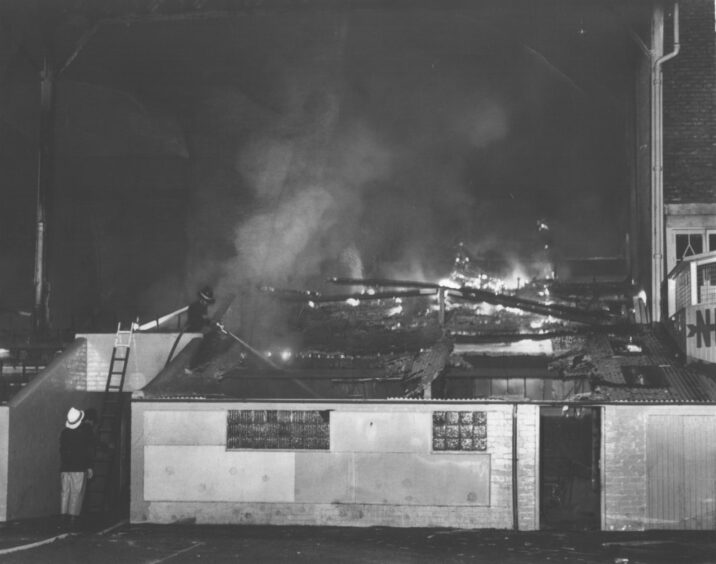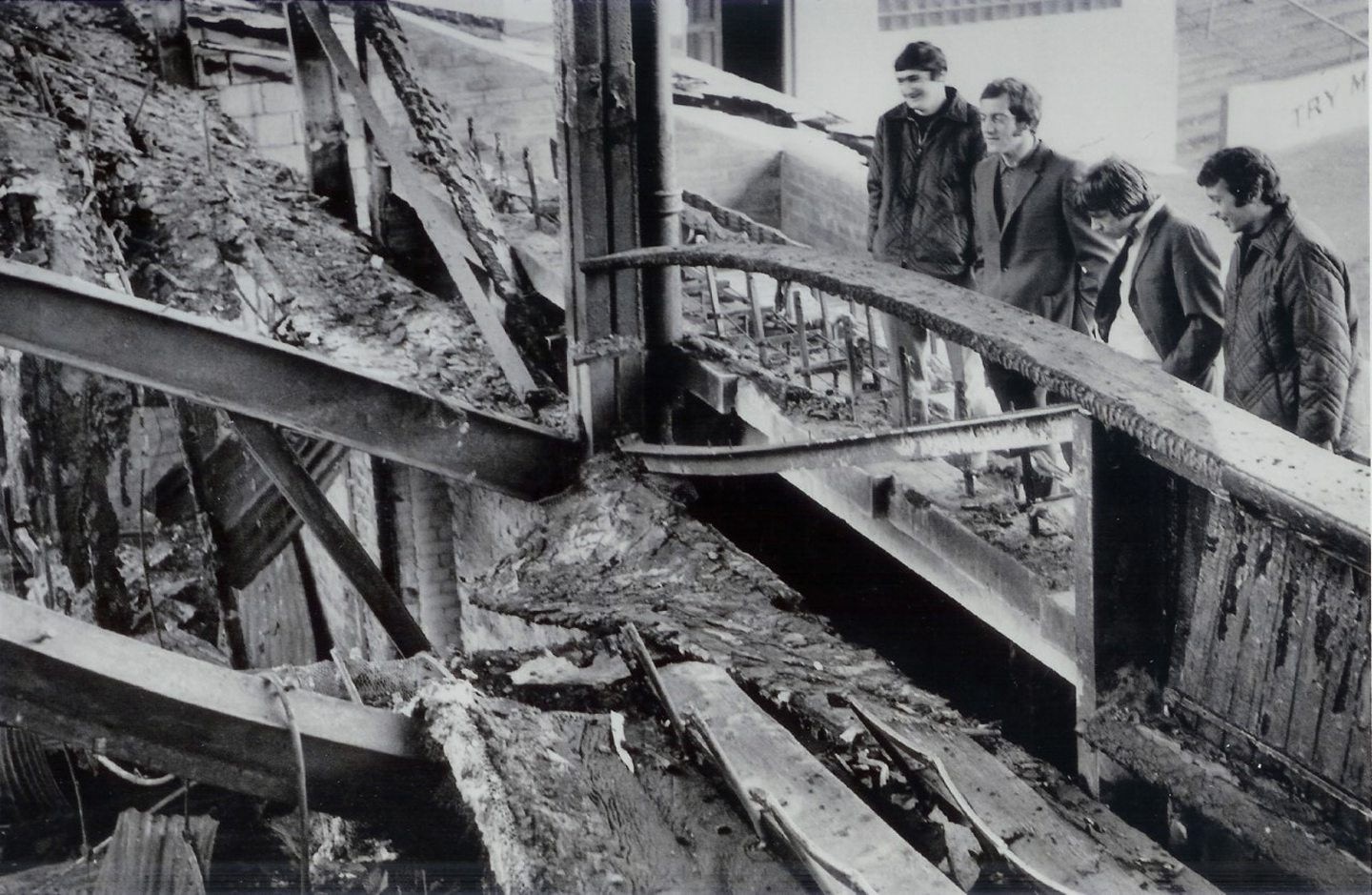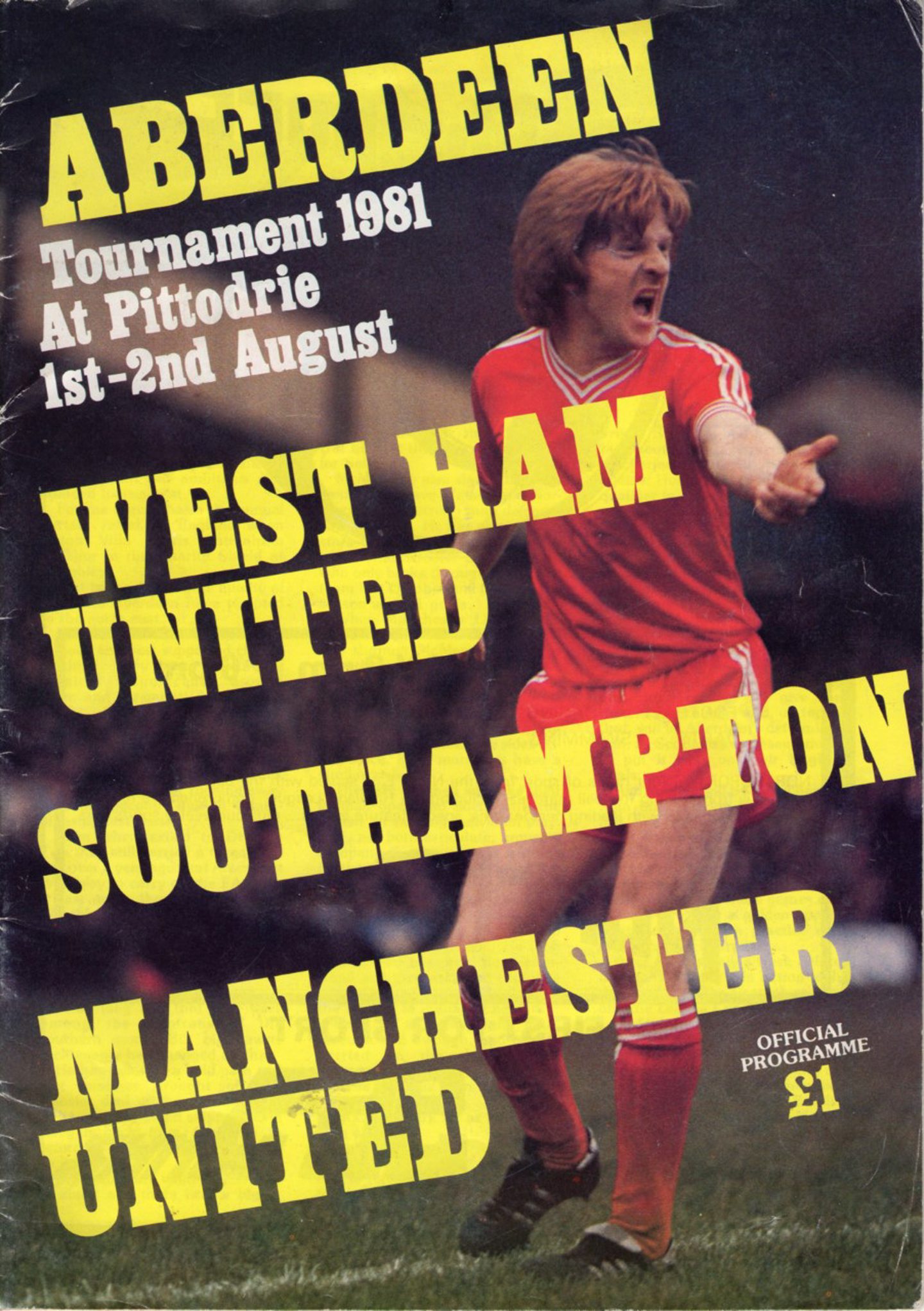It’s one of the most striking photographs in Aberdeen FC’s history; an image which would send shockwaves through health and safety executives.
It shows a section of the massive 40,000 crowd who turned up to watch a Scottish League duel between the Dons and Hibernian in August 1947.
Yet, what is even more remarkable than the size of the attendance is the sight of scores of supporters sitting merrily on the roof of Pittodrie Stadium without a care in the world.
As the Press & Journal reported: “Thousands, unable to see the game from the terracing, were allowed to sit round the cinder track, while others of a more adventurous nature, perched themselves on the roof at the King Street end of the ground.”
It would never happen now, of course.
But then, as archivist Chris Gavin told me, there are plenty of things about Pittodrie which will surprise the majority of people.
The arena is most famously associated with football and that’s never going to change.
But, during the last 125 years, it has also hosted gymnastics, cricket, whippet racing and, as long ago as 1932, the South African Springbok rugby team visited the venue.
Home of Aberdeen FC ‘an old friend’
The P&J reported on how the contest was played “in terrible conditions of wind and heavy icy rain” which restricted the crowd to 9,000 spectators on January 9.
But though the Springboks won by 9-0, it was still hailed as a successful occasion with the North of Scotland putting up brave, if ultimately futile, resistance.
Mr Gavin, who has written a new history of the stadium, has been a Dons aficionado for many decades. It’s in his blood and he has celebrated the club’s myriad triumphs.
As he told me: “Pittodrie is an old friend providing links to the past, to my dad who first took me into the enclosure and to my grandfathers and my uncles and aunts who all trooped along to cheer the Dons.
‘Pittodrie was always there for me’
“Stepping on to the terracing gives a reassuring sense of permanence.
“Pittodrie and the Dons are a constant in life and, no matter the ups and downs, they are always there.”
However, his new work is about far more than just football and sport.
It provides a social commentary on crowd trouble, rammies between rival clubs, near-disasters, traffic chaos and pop concerts on the pitch with Rod Stewart and Elton John.
And there’s even an eye-watering story about a blimp which might have come straight from the mind of Jules Verne or H G Wells – but was actually suggested by the council.
The riot unfolded in 1909 when Pittodrie witnessed unprecedented scenes, sparked by a mix-up over referees and the kick-off time.
Mr Gavin said: “About half of the crowd swarmed on to the pitch and gathered in front of the pavilion, demanding that the game be played to a finish or their money back.
Some people are on the pitch…
“Stone-throwing started and windows in the upstairs level of the pavilion were smashed.
“Some youngsters stole the pitch roller, whilst others attacked the goalposts and were only prevented from destroying them by the intervention of some constables.
“The last act of the rebellious crowd was to tear down the King Street exit gates from their hinges before they vanished into the night.”
Much later in the Dons story came the calamitous blaze in February 1971 which caused massive destruction to the main stand, though mercifully without any loss of life.
The firemaster later reported that about 1,400 seats had been destroyed and many more were charred, but estimated that about 60% of the building was still useable.
Fire service saved Pittodrie Stadium…
Those who responded to extinguishing the flames did a marvellous job in reducing the impact of the conflagration, but initial estimates of the damage came to £100,000.
Yet the look on the faces of the players and directors told its own story. Yes, this was a severe blow to the club on and off the pitch.
But no, it was not a tragedy because it happened when nobody was inside the ground.
In the next 15 years, there was the arrival of Alex Ferguson, the transformation of the Dons into a major European force and a packed trophy cabinet at Pittodrie.
They conquered Europe and beat Bayern Munich and Real Madrid in 1983 en route to the European Cup Winners Cup in Gothenburg. Awards and accolades were doled out.
Other Pittodrie plans were in the air…
It opened up all sorts of possibilities, but nothing to rival one suggestion in 1980.
Indeed, you may have to read this twice to work out what was going on inside some people’s heads.
As Mr Gavin said: “Over the years, many ideas for stadia have been floated, but the City Council came out with a beezer when they suggested that a 20,000 capacity all-seated stadium inside a giant balloon might be an option.
Where do you even start?
“It could be erected at the proposed Bridge of Don Exhibition Centre – which was still out to tender at the time.
“The stadium would have an AstroTurf pitch and, amongst other uses, provide a venue for Dons’ matches when outdoor football was stymied by bad weather.”
That proposal was swiftly booted into Row Z, but the future of Pittodrie Stadium has been in doubt for the last 20-30 years with alternative schemes mooted by different people.
Mr Gavin has favoured a new build since the mid-1990s, but he is also passionate about the amphitheatre’s rich heritage and has moved towards it being redeveloped.
‘Let’s keep the dear old place’
He said: “How potential investors might look at this, as opposed to a completely new stadium is unclear, but raising the funds for the first phase should be a more straightforward target than for an entire stadium.
“And so much better than seeing the dear old place wiped from the face of the Granite City forever.”
As a postscript, one of the robberies mentioned in the headline occurred in 1965 when the main office was ransacked, along with other damage in the boardroom.
Following some detective work, a pair of burglars were rapidly caught – because one of them was stupid enough to leave his name and address on the office typewriter.










Conversation